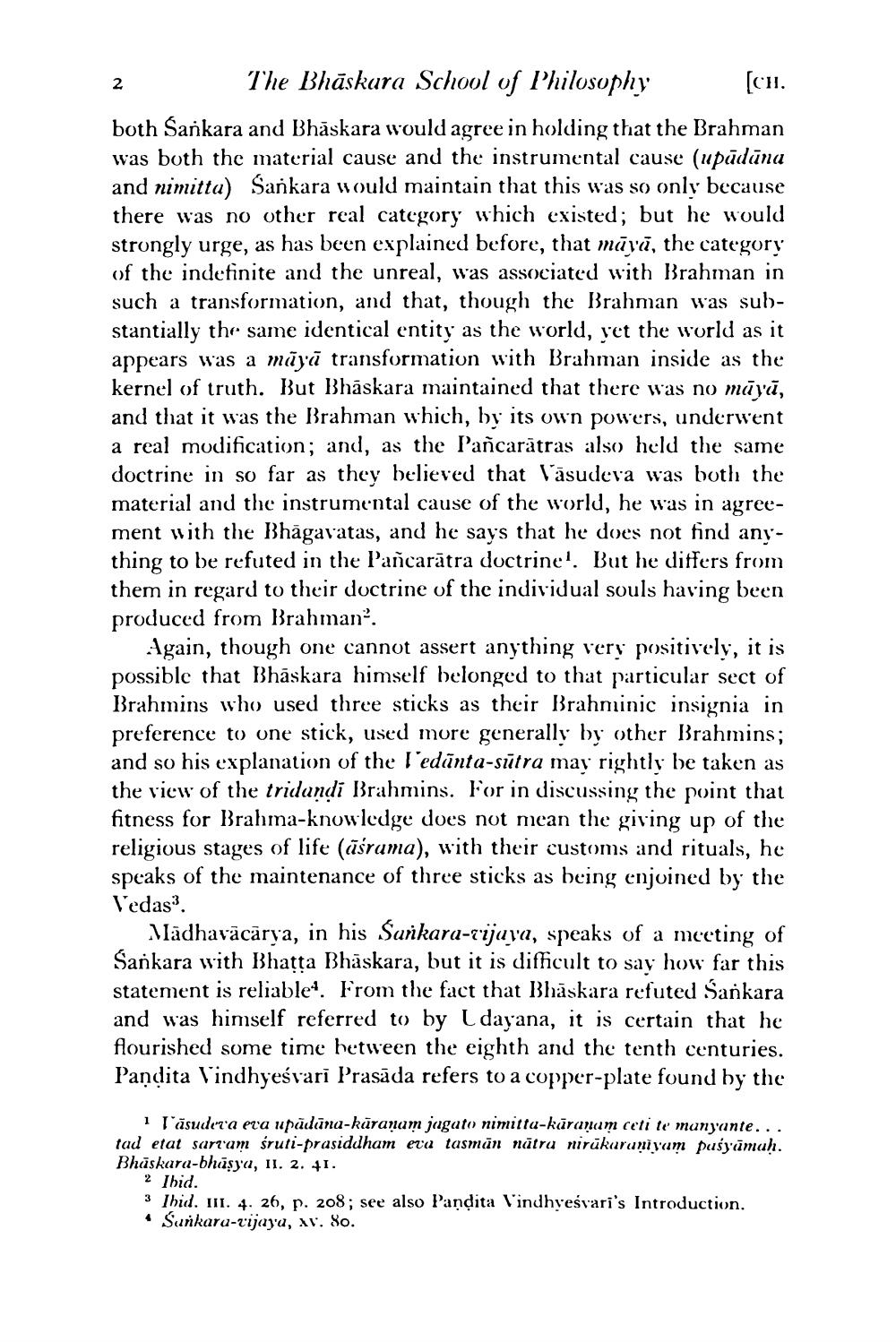________________
The Bhāskura School of Philosophy [CH. both Sankara and Bhāskara would agree in holding that the Brahman was both the material cause and the instrumental cause (upādānu and nimitta) Sankara would maintain that this was so only because there was no other real category which existed; but he would strongly urge, as has been explained before, that mārā, the category of the indefinite and the unreal, was associated with Brahman in such a transformation, and that, though the Brahman was substantially the same identical entity as the world, yet the world as it appears was a māyā transformation with Brahman inside as the kernel of truth. But Bhaskara maintained that there was no mājā, and that it was the Brahman which, by its own powers, underwent a real modification; and, as the Pancarătras also held the same doctrine in so far as they believed that Vasudeva was both the material and the instrumental cause of the world, he was in agreement with the Bhāgavatas, and he says that he does not find anything to be refuted in the Pancarātra doctrinet. But he differs from them in regard to their doctrine of the individual souls having been produced from Brahman'.
Again, though one cannot assert anything very positively, it is possible that Bhāskara himself belonged to that particular sect of Brahmins who used three sticks as their Brahminic insignia in preference to one stick, used more generally by other Brahmins; and so his explanation of the l'edānta-sūtra may rightly be taken as the view of the tridandi Brahmins. For in discussing the point that fitness for Brahma-knowledge does not mean the giving up of the religious stages of life (üśrama), with their customs and rituals, he speaks of the maintenance of three sticks as being enjoined by the Vedas.
Mädhavācārya, in his Surkara-cijava, speaks of a meeting of Sankara with Bhatta Bhāskara, but it is difficult to say how far this statement is reliablet. From the fact that Bhāskara refuted Sankara and was himself referred to by L dayana, it is certain that he flourished some time between the eighth and the tenth centuries. Pandita Vindhyeśvari Prasāda refers to a copper-plate found by the
i läsudera eta upādūna-kāranam jagato nimitta-karanum cetite manyante... tad etat sari'am śruti-prasiddham eva tasmān nātru nirukuruniyum puśyāmah. Bhaskara-bhūsya, II. 2. 41.
2 Ibid. 3 Ibid. m. 4. 26, p. 208; see also Pandita Vindhyeśvari's Introduction. · Sunkaru-vijaya, w. 8o.




